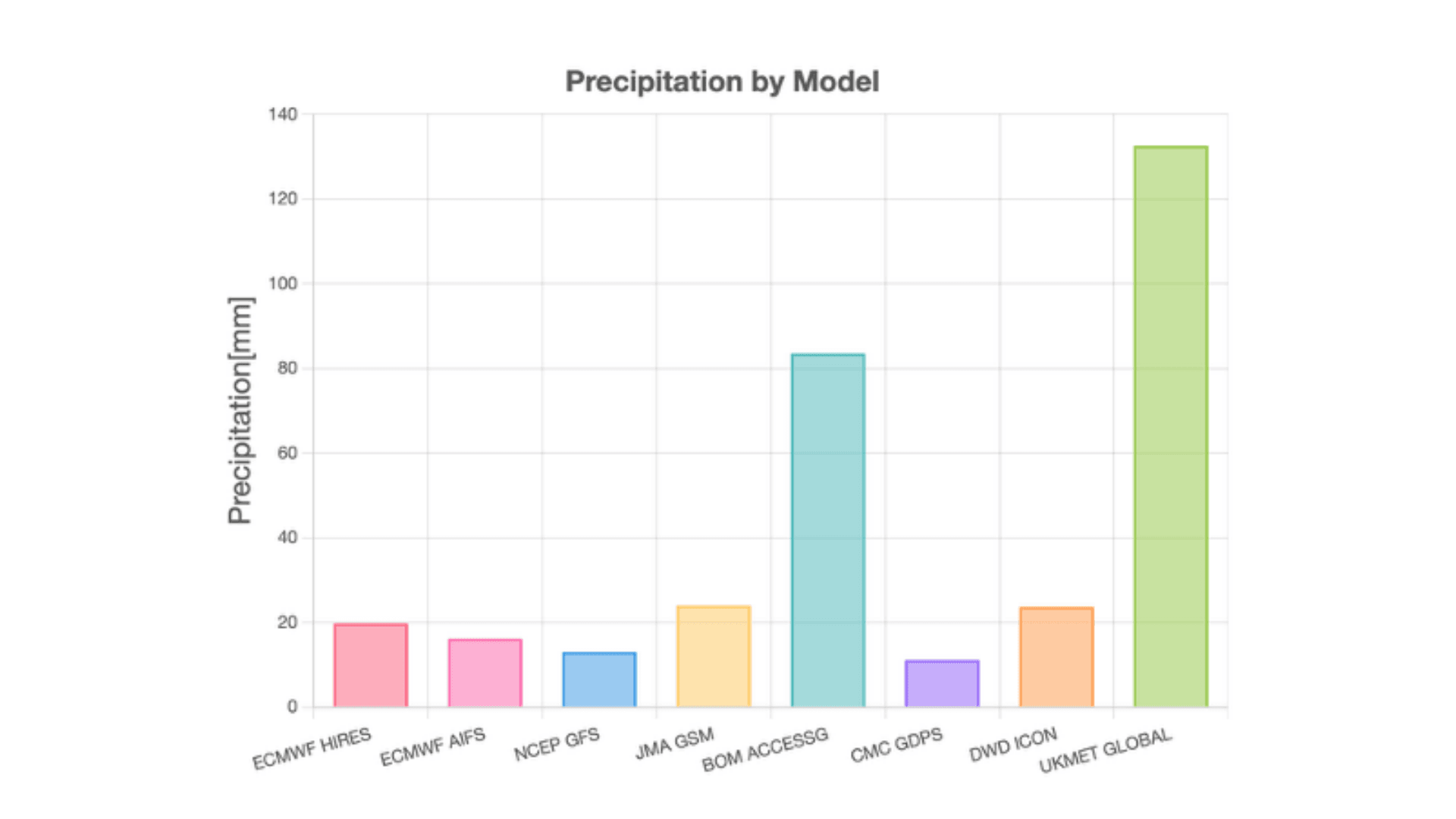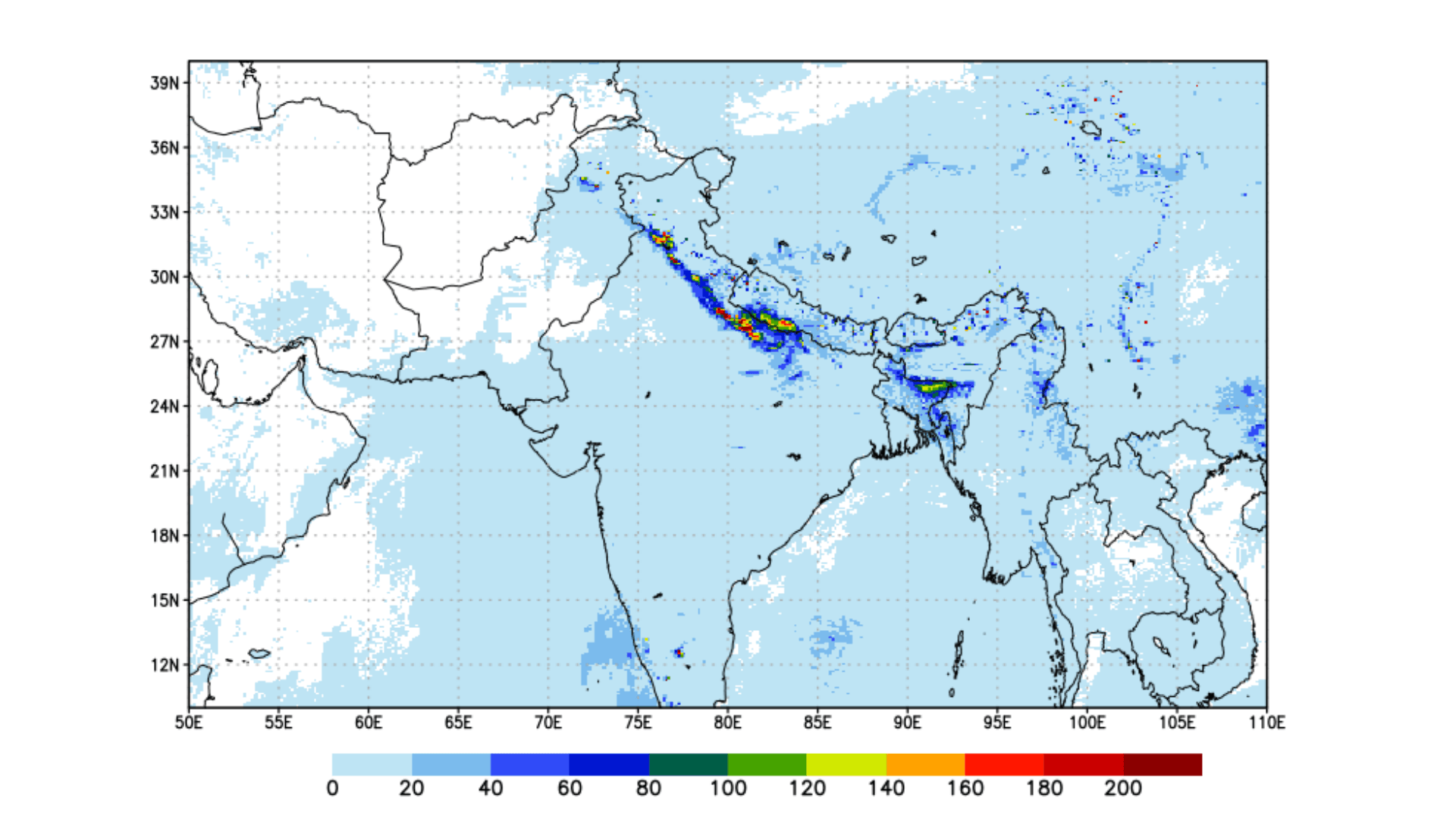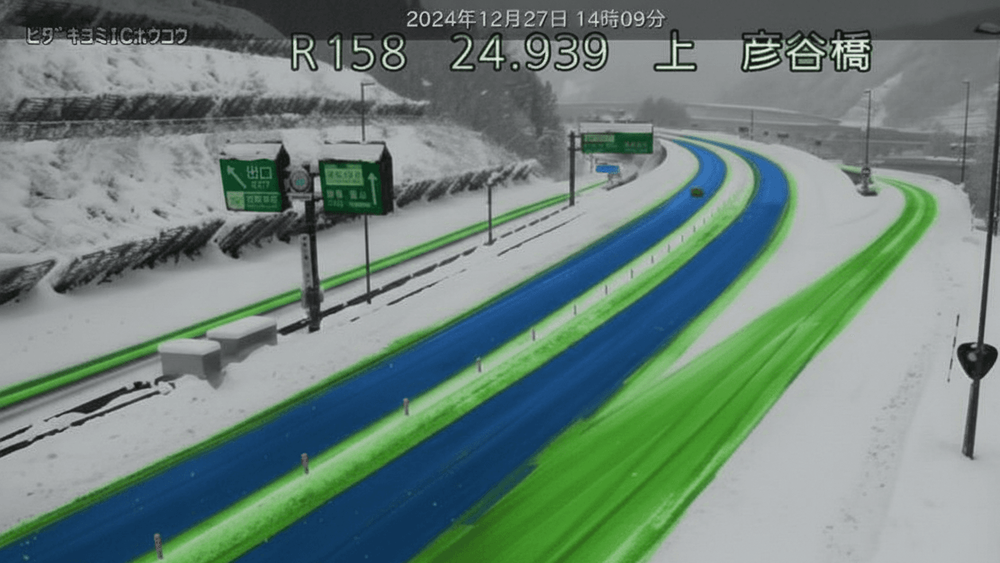August 20, 2025
Heavy rains from August 3-5, 2025, that caused landslide disasters in northern India

From August 3-5, 2025, northern India's Uttarakhand experienced severe rainfall as the southwest monsoon carried extremely warm and humid air from the Arabian Sea into the lower atmosphere. This combined with enhanced orographic uplift and low-pressure circulation formation near the Himalayan mountain range, leading to rain cloud development and torrential downpours. The heavy rainfall triggered landslides, leaving over 100 people missing and causing 10 deaths1.
According to the India Meteorological Department2, the most intense precipitation occurred on August 5th, with 24-hour rainfall totals reaching 300mm in Haridwar, 170mm in Narendranagar, 150mm in Rishikesh, 130mm in Jolly Grant, and 120mm in Kotdwar.
When comparing precipitation forecasts from various meteorological agencies' weather models as of 0:00 UTC on August 4th for Haridwar (which recorded the highest rainfall), the UK Met Office model predicted the largest precipitation amounts (Figure 1). The UK Met Office forecast model shows localized precipitation exceeding 100mm in northern Indian regions near the Himalayan mountains where the heavy rain disaster occurred (Figure 2).

Model base time: August 4, 2025, 0:00 UTC, Location: Haridwar ECMWF: European Centre for Medium-Range Weather Forecasts NCEP: National Centers for Environmental Prediction (USA) JMA: Japan Meteorological Agency BOM: Bureau of Meteorology (Australia) CMC: Canadian Meteorological Centre DWD: German Weather Service UKMET: UK Met Office
In Uttarakhand, precipitation typically increases during the monsoon season from June to September, with normal August monthly precipitation averaging 206.1mm. In this event, approximately 1.5 times the rainfall that normally occurs over an entire month fell within just 24 hours.
Weather models generally struggle to capture extreme phenomena like this heavy rainfall event. Among the compared models, none predicted the full 300mm of precipitation for August 4-5, but several did forecast amounts exceeding 100mm, indicating that the heavy rainfall potential was captured to some degree.
Our company strives to provide highly accurate forecasts by conducting ensemble forecasting using not only Weathernews' proprietary prediction models but also models from other agencies. We continuously work to improve our forecasts through accuracy evaluation and will continue verifying the accuracy of various prediction models to deepen our understanding of model characteristics and deliver more precise weather information.

Footnotes
Footnotes

December 25, 2025
Snow Removal Decisions Beyond Gut Instincts: How AI Is Redefining Snow Accumulation Forecasting
December 23, 2025
Behind the Scenes of Real-Time Fog Detection: How AI Instantly Analyzes 3,500 Cameras Nationwide
December 22, 2025
Japan’s Largest Network: Why Weathernews Operates 1,000 Proprietary Pollen Monitoring Devices